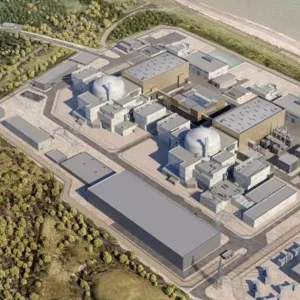With just two months to go before completion in September of a second massive nuclear storage cavern in Sweden, exceptionally careful drilling has been needed to avoid disturbing the first cavern, in use nearby.
Work began last January on the SEK 55M ($6.4M) cavern, to be used for interim storage of nuclear waste, as part of an eventual three cavern central storage centre at the Oskarshamn nuclear power station in the south of the country.
Spent fuel from all Sweden’s nuclear power plants will be stored in deep, water-filled pools for 30 to 40 years before being moved to a final storage facility.
The new cavern will be used from 2004, when the existing cavern reaches its full capacity. Accurate drilling and careful blasting has been necessary to cut vibration to the minimum, as the new cavern is just 40m from the existing one.
The last part of the excavation, a 4m thick and 27m high wall of rock, is under way. When complete, work will start on the concrete structures which will hold spent nuclear fuel.
The cavern, 20m–25m below ground level, is 27m high and has a total volume of 90,000m3. The rock is granitoid with fractures of volcanic rock within it. Space is being left for a third cavern.
The main contractor for the work, Skanska, is using an Atlas Copco Rocket Boomer 353 three-boom drill rig with a control system to help position the holes. Because of the need to reduce vibration, accuracy is more important than speed in positioning the holes.
Three, four-man shifts are being worked. The cavern has been excavated from the top by means of a gallery and four 5m benches.
The construction sequence was produced by Skanska Teknik and approved by the client SKB (Swedish Nuclear Fuel and Waste Management Company).
Much time was spent determining whether the 4m thick by 27m high wall, which separates the two caverns, would stand independently. The wall’s main function is to prevent terrorist attack and to stop gases from the blasting from penetrating through to the existing cavern.







